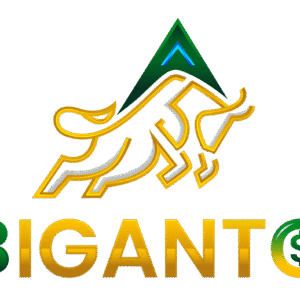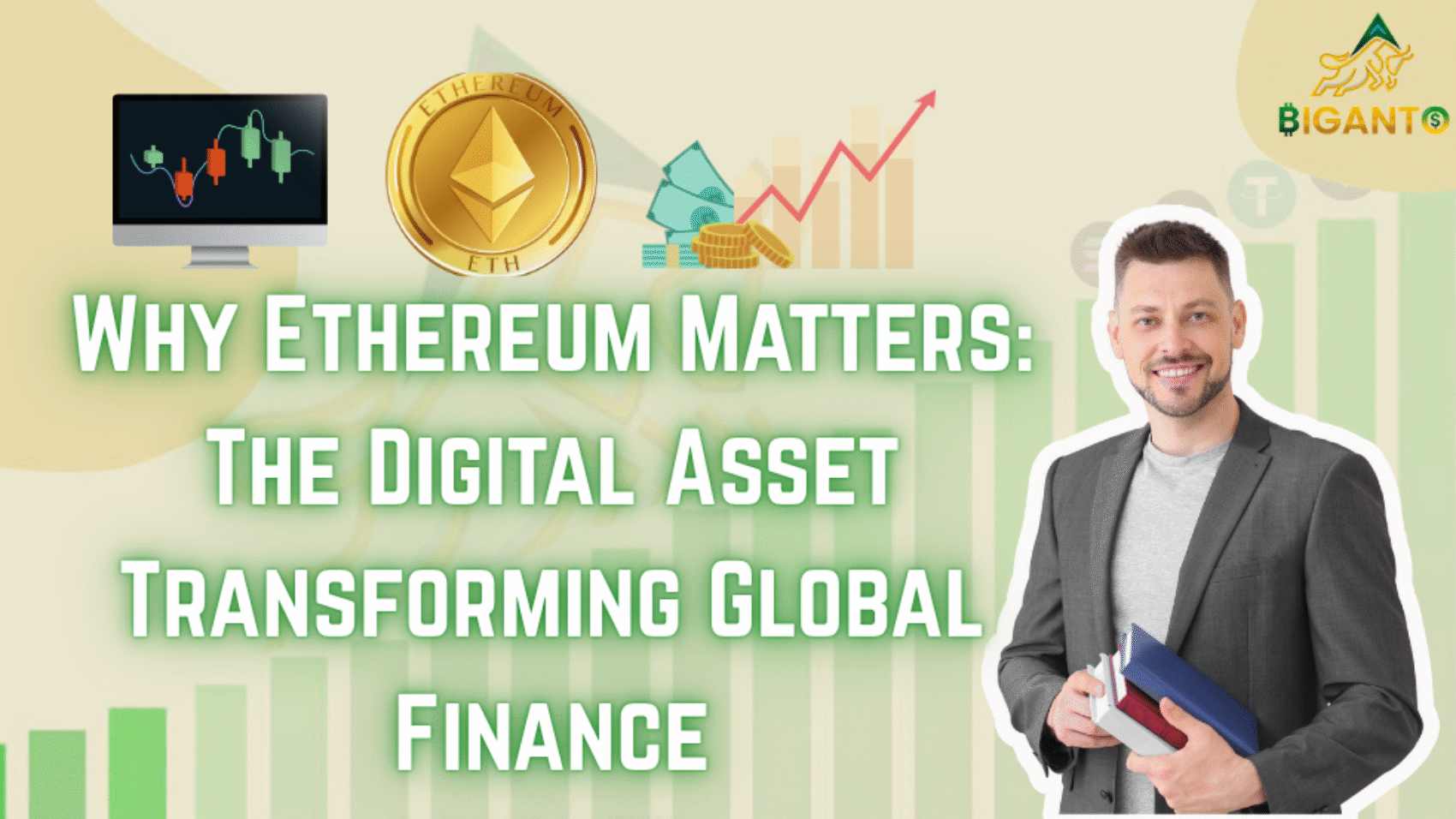Ethereum is a decentralized, open-source blockchain platform known for its native cryptocurrency, Ether (ETH). Unlike Bitcoin, which mainly functions as digital money, Ethereum is programmable, allowing developers to build decentralized applications (dApps) and smart contracts.
Anyone can use Ethereum to create secure digital tools or access decentralized finance (DeFi), NFTs, games, and more—without banks or intermediaries. It serves as both a global financial system and a digital infrastructure for Web3.
ETH is used to pay for transactions and services on the network and is the second-largest cryptocurrency in the world after Bitcoin.
History of Ethereum
Ethereum was proposed in 2013 by Vitalik Buterin as a programmable blockchain that could go beyond Bitcoin’s limited functionality. Launched in 2015, it introduced smart contracts and enabled developers to build decentralized applications (dApps). A major turning point came in 2016 with the DAO hack, which led to a controversial hard fork, resulting in two chains: Ethereum (ETH) and Ethereum Classic (ETC). In the years that followed, Ethereum became the backbone of the ICO boom, DeFi revolution, and NFT explosion. In 2022, Ethereum transitioned from proof of work to proof of stake through “The Merge,” cutting its energy usage by over 99%. Today, with ongoing upgrades and Layer-2 scaling solutions, Ethereum continues to lead the decentralized internet revolution. In 2023Ethereum expanded its scalability with widespread adoption of Layer-2 rollups like Arbitrum and Optimism. The Shanghai upgrade enabled ETH stakers to finally withdraw their locked tokens, boosting confidence in the network. In 2024 The proto-danksharding (EIP-4844) upgrade lowered gas fees, making Ethereum more affordable for users and developers. Ethereum strengthened its position in DeFi, NFTs, and tokenization of real-world assets.
How is Ethereum Different from Bitcoin?
Bitcoin, launched in 2009 by the pseudonymous Satoshi Nakamoto, was created to serve as a decentralized digital currency that enables peer-to-peer transactions without the need for banks or intermediaries. It was designed purely as a payment system and a store of value, not as a platform for building applications. The Bitcoin blockchain supports only the Bitcoin cryptocurrency, and its supply is capped at 21 million coins, making it deflationary by design. Bitcoin operates on a proof-of-work (PoW) consensus mechanism, which requires miners to solve complex mathematical problems to validate transactions and earn rewards. These miners are compensated with newly minted bitcoins and transaction fees paid by users. However, this process is energy-intensive and has often been criticized for its environmental impact.
Ethereum, on the other hand, was launched in 2015 by Vitalik Buterin and others with a much broader vision. It is often referred to as “the world’s programmable blockchain,” as it allows developers to build and deploy smart contracts and decentralized applications (dApps) on its platform.
Unlike Bitcoin’s fixed supply, Ethereum has no maximum cap on the number of ETH that can be created. As of May 2024, over 120 million ETH are in circulation. Ethereum transitioned from proof-of-work to proof-of-stake (PoS) in 2022, drastically reducing its energy usage. In PoS, validators are selected based on how much ETH they hold and are willing to “stake” as collateral. Ethereum also handles transaction fees differently—fees, known as gas, are paid by users to execute transactions and smart contracts. A portion of these fees is burned, reducing the overall supply and potentially increasing ETH’s value over time.
How Does Ethereum Work?
Smart Contracts
Smart contracts on Ethereum function like traditional contracts but are fully digital and programmed using Ethereum’s coding language, Solidity. Instead of depending on intermediaries such as lawyers or brokers to enforce the terms, these contracts automatically execute when preset conditions are met.
This automation simplifies transactions and agreements by removing the need for third parties, making processes faster, more transparent, and cost-effective. Ethereum’s smart contracts have unlocked a wide range of innovative applications—from decentralized finance (DeFi) to NFTs—revolutionizing how agreements are created and enforced in the digital world.
Gas and Transactions
Executing smart contracts or transferring ETH on Ethereum requires “gas,” a unit that measures computational effort. Users pay gas fees in ETH, and these fees incentivize miners or validators to process and confirm transactions.
Decentralized Apps (dApps)
Smart contracts have also enabled the creation of decentralized applications, or dApps. Similar to regular apps on your phone or computer, dApps offer various functionalities. However, instead of running on a central server, their code is uploaded through smart contracts to the decentralized Ethereum network. This allows nodes on Ethereum’s peer-to-peer network to verify transactions and maintain the app without any centralized control.
Where Ethereum Is Making an Impact-
Ethereum is more than just a cryptocurrency—it’s a foundation for a new internet powered by decentralized technology. Here are some real-world areas where Ethereum is transforming how we interact online:
🚀 Reinventing Finance Without Banks
Through Decentralized Finance (DeFi), Ethereum removes the need for middlemen like banks or brokers. Platforms such as Aave, Uniswap, and Compound let users borrow, lend, swap tokens, and earn passive income—all powered by smart contracts. Today, tens of billions in value flow through Ethereum-based DeFi apps.
🎮 Ethereum in Gaming
Ethereum is playing a big role in changing how we experience video games and virtual worlds. In traditional games, the items you buy—like skins, characters, or weapons—are usually controlled by the game company. But with Ethereum-based games, players can truly own their digital items using blockchain technology.
One example is Decentraland, a virtual world where players can buy, sell, or build on virtual land. Every piece of land, avatar, outfit, or building in Decentraland is linked to the Ethereum blockchain, so ownership is secure and cannot be copied or taken away.
Another popular game is Axie Infinity, where players collect and battle cute digital creatures called Axies. The game runs on blockchain and has its own currency called SLP (Smooth Love Potion), which players can earn and use within the game. In some countries, people have even earned real income by playing Axie Infinity.
With Ethereum in gaming, players don’t just play—they participate in real digital economies.
🖼 Understanding Non-Fungible Tokens (NFTs)
NFTs, or Non-Fungible Tokens, became very popular in 2021. They are unique digital items stored on the Ethereum blockchain. “Non-fungible” means that each token is one-of-a-kind and can’t be exchanged on a one-to-one basis like regular money or crypto.
An NFT could be a digital artwork, music file, video, virtual real estate, or even a tweet. What makes it special is that it has a unique code (private key) that proves ownership, just like a signature on a real-world painting.
When you buy an NFT, the transaction is recorded on the Ethereum blockchain. Everyone can see that you’re the new owner, and no one else can claim that item as theirs unless you sell or transfer it.
Today, NFTs are used for:
- Art – Digital paintings and 3D models
- Collectibles – Like trading cards or rare game items
- Sports – Fan tokens of favorite athletes or video highlights
- Music – Exclusive tracks sold directly to fans
- Virtual fashion and real estate – For use in metaverse worlds like Decentraland
NFTs allow creators to make money directly and give buyers full digital ownership, opening up a new world of digital collecting and creativity.
💡 Decentralized Autonomous Organizations (DAOs)
DAOs are blockchain-based organizations that run on smart contracts instead of traditional management. Members use tokens to vote on proposals, budgets, and changes—making decisions transparent and democratic. Examples like MakerDAO and Gitcoin show how communities can govern projects without centralized control.

